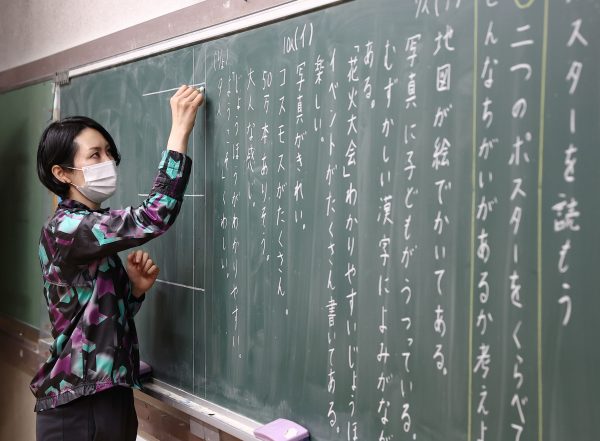According to this definition, the teacher shortage at the beginning of 2021 was 0.26 per cent in primary schools, 0.33 per cent in middle schools and 0.1 per cent in senior high schools. The problem of middle and high schools not having teachers for some subjects was resolved by the middle of the 2021 school year.
The causes of this teacher shortage include macro aspects — such as policy and human-made trends — as well as micro aspects related to the way teachers work and the social recognition they receive.
Japan’s first policy change was the decentralisation reforms initiated in the 2000s under former prime minister Junichiro Koizumi. These reforms allowed local governments to decide the number, salary and treatment of teachers as long as they were within the total teacher salary budget.
Yet there was no increase in the budget from the national government and some local authorities refrained from hiring in anticipation of a declining birth rate. This incentivised local governments to reduce the number and salaries of regular teachers and use the money saved to hire more non-regular teachers whose labour costs were more affordable. With classroom teacher replacement in elementary schools, there have been cases where temporarily appointed teachers or managers have replaced actual homeroom teachers.
Japan has one of the lowest birth rates in the world, and it is still declining. But as the so-called baby boomer generation retires, so too has the number of people taking maternity leave increased — the combination of which has stretched Japan’s workforce thin. This increases the demand for non-permanent teachers, resulting in a shortage of temporary appointments.
The declining birth rate and increase in the number of people taking maternity leave seem to contradict each other. But the proportion of women employed in education is 59.9 per cent in elementary schools, 43.4 per cent in middle schools and 35.4 per cent in senior high schools. This makes the shortage of teachers due to maternity leave particularly serious in elementary schools. The duration of maternity leave is also increasing because of the lack of licenced nurseries.
The expectation that mothers perform care work, including child rearing, is still strong in Japan. It is uncommon to hire nannies or outsource household chores. Conservative political parties have encouraged family self-help through three-generation cohabitation — but this does not reflect the reality of the younger generation, who mostly migrate to urban areas.
The next factor is the workload faced by Japanese teachers. Japanese elementary schools have a homeroom teacher system. Homeroom teachers teach four main subjects — Japanese, mathematics, science and social studies. They are also expected teach many other subjects, such as ethics, physical education, calligraphy and foreign languages. Teachers work with students to organise morning and ‘goodbye’ meetings, weekly class meetings, school lunches and classroom cleaning. In the lower grades, teachers play with students in the school yard during the 20-minute break.
It has been noted that ‘the work of elementary school teachers is continuous and they hardly get any break time’. In middle and high schools, teachers supervise club activities, which involves coaching not only after school but also on weekends. Many teachers work six days a week. As a consequence, 57.8 per cent of primary school teachers and 74.2 per cent of secondary school teachers exceeded 60 work hours per week.
Teaching is no longer a dream job for young people. They must research teaching materials, deal with bullying and address parents who complain to schools, while also receiving zero overtime pay. Long hours of unpaid work are a common problem from primary to higher education, and is said to be a ‘rewarding exploitation’ of teachers.
The competitiveness of teacher examinations has continued to fall sharply since 2000, as fewer people show interest in qualifying to become a teacher. Since 2005, government deregulation has led to a rapid increase in the number of universities that can train schoolteachers. Even students whose academic ability would not have met former requirements can now obtain teaching qualifications with a certain number of credits. .
There has also been an overuse of special licences to take advantage of the severe shortage of teachers and an increase in the number of technical subject teachers working concurrently across local authorities. The quality of full-time teachers is now a matter of concern. At the same time, there is a shortage of non-regularly employed teachers.
Measures to address these problems include planned recruitment across a multiyear timeframe and the expansion or removal of teaching age limits. Yet teacher shortages are more closely related to the long working hours and ‘rewarding exploitation’ of teachers. These problems are linked to the poor work-life balance in Japanese society and the quantity and quality of teacher education.
Sae Shimauchi is Associate Professor at the International Centre at Tokyo Metropolitan University.

